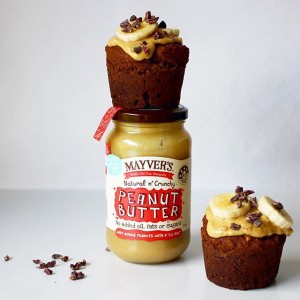Guest Post: The ins and outs of nuts & seeds
September 2, 2015
From nut to nut, you’ll find some different health benefits, unique to each. We’ve teamed up with Victoria , aka @_naturalnutrition_, who’s nuts about nuts! She tells us the different ways they can improve your health and wellbeing. Don’t forget to check out her recipe at the end!
Nuts and seeds are awesome additions to our diets. They’re pretty spectacular as they contain protein, fibre and good fats- meaning they’re particularly satiating, therefore keeping us fuller for longer. All seeds and nuts are rich in healthy monounsaturated fats, linked to decreased risk of cardiovascular disease and even aids in weight loss.
Here’s a list of the specific benefits:
So, what’s the best way to get in all of the nutrients? Eat a wide variety of foods – including different nuts and seeds. This goes for everything – fruits, vegetables, grains. The wider the range of food you consume, the greater the range of vitamins you’ll be getting in. Check out my gluten free and low FODMAP muffin recipe below that is as tasty as it is healthy!

1 tablespoon chia seeds (or chia meal)
4 small, or 3 large, very ripe bananas, mashed (just over 1 cup)
1/2 cup teff flour and 1/2 cup buckwheat flour (OR 1 cup of plain or wholemeal flour)
1/2 cup tapioca or arrowroot flour
1 teaspoon ground cinnamon
1 teaspoon maca powder, optional
1/4 teaspoon ground nutmeg
1 teaspoon vanilla powder or extract
3 tablespoons pure maple syrup
Pinch of himalayan salt
1/4 cup melted coconut oil, plus extra for greasing
1/3 cup smooth or crunchy peanut butter, for insides
1/4 cup smooth or crunchy peanut butter, for ‘icing’
1 tablespoon raw cacao nibs, to garnish
1. Preheat oven to 180 degrees Celsius fan forced.
2. Use a spice grinder or small blender attachment to blitz your chia seeds into a fine meal (skip this step if using pre-ground chia meal).
3. Place chia meal in a small bowl, combine with 4 tablespoons of water, and leave to congeal for 10-15 minutes.
4. Peel bananas, and mash in a large mixing bowl.
5. Add teff flour, buckwheat flour, tapioca flour, cinnamon, nutmeg, vanilla, baking powder, cacao powder, and maca if using.
6. Pour maple syrup, chia egg, and melted coconut oil into bowl, and mix until evenly combined (if your mixture is looking a little dry, add an extra tablespoon of water to bring it together).
7. Grease 6 silicon muffin moulds, and fill with half way with batter mixture.
8. Dollop in 1 tablespoon of peanut butter, then fill mould the rest of the way with batter to cover the peanut butter completely.
9. Place in oven and bake for 25-30 minutes, or until a skewer inserted into the centre does not come out wet.
10. Remove from oven and allow to stand. Once cool enough to touch, transfer from moulds to a wire rack to cool completely.
11. Spread each muffin generously with remaining peanut butter, and sprinkle with cacao nibs.

